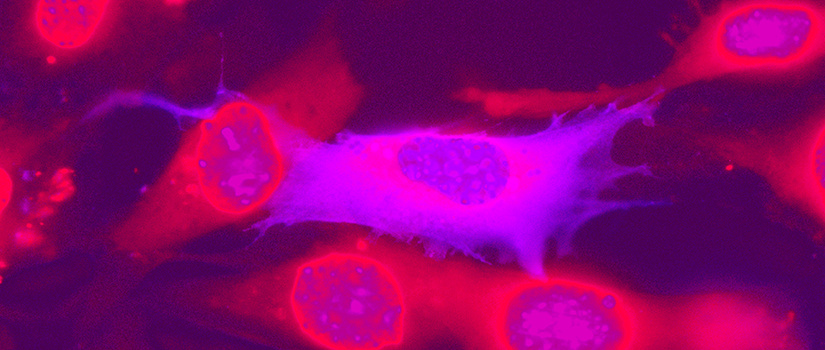Author
Claire Chabot
“In purity and according to divine law will I carry out my life and my art.”
– The Hippocratic Oath (Hippocrates, 5th century B.C.)
Ovarian cancers are the leading cause of death from cancer of the female reproductive system. Approximately 50% of ovarian cancers have defects in the homologous recombination (HR) pathway that is required for the repair of DNA double-stranded breaks. The status of HR genes, such as BRCA1, BRCA2, and the RAD51 family, contributes to ovarian cancer development as well as treatment decisions regarding chemotherapy, radiation, and immunotherapy. The overarching goal of this project is to identify new insights into HR that can integrate with Precision Medicine Initiatives and align with the goals of the National Cancer Institute’s Cancer Moonshot Program. My research work focuses on studying the localization of different RAD51D mutant proteins. I have hypothesized that RAD51D mutations disrupt the cellular localization of RAD51D, since absence of RAD51D from the nucleus is expected to increase in DNA damage. RAD51D mutations were generated and fused with the Green Fluorescent Protein (GFP) gene so that fluorescent localization studies could be conducted. Another long-term goal of this project is to provide insight into how the RAD51D mutation may benefit the fifty percent of HR-proficient ovarian cancer patients and increase their cancer’s sensitivity to chemotherapy.
Yet, how does this translate into an art project?
As important as it is to submit abstracts to scientific conferences and explain the research in terms relevant to the biological sciences community, I find myself explaining this project more often in layman’s terms to my non-science friends and family. My passion for this research compelled me to tell more and more people about it as these past three years in the Pittman Laboratory have flown by. What began the bridging of science and art in my research project, however, was when I observed the fluorescing images under a microscope and thought them to be beautiful. It was more than just data; the images were stunningly exquisite. Once the Honors College opportunity for the Artist in Residence Program appeared, I decided to take advantage of it in order to express my thoughts to a broader audience. Each of the images I constructed were then lasered onto glass to not only create a glossy appearance but also a more interactive exhibit as the viewer can see the image along with a reflection of themselves.
My ultimate goal is to engage people in scientific research that may not otherwise be interested and to show others that there can be beauty in lab work. It is not just statistics and pipetting. Art is an accessible way to communicate with broad groups of people, and this is one of the reasons I chose this medium. Taking the project a step further, each piece in my work has been named after historical or contemporary female scientists I find extremely fascinating or have personally influenced me. I chose to do this not only to represent women in science but also to represent the female population heavily impacted by ovarian cancer. When examined closely, we can see the universe everywhere, even under a microscope.
The importance of this art project stems beyond the need for the transparency of female contributions to science, it extends to the need for ethical and responsible visual scientific communication. There has always been a strong focus on increasing scientific literacy within the general population. In 2015, however, students in the United States ranked 24th out of 71 countries in scientific literacy. (1) What’s important to remember as well is that not all students learn the same way, so understanding how to reach a larger group of people is important. To gain public support for genetic cancer research, it is important that the general population has a solid grasp of science, as ignorance can lead to fear, and fear of the unknown is dangerous to the advancement of science.
As important as it is to have ethical and responsible scientific communication, I believe that it is equally important to have a deeper artistic meaning to draw in the public. To me, it seems almost improbable that empirical data can ever translate into an emotional understanding of the human experience with illness. How other people process their diagnosis and disease is very subjective to the individual, and how people process art is equally subjective. With this in mind, I wanted to bridge this subjective experience with the objective experience of research. When this gap can be bridged is when we can finally connect the importance of ovarian cancer research to the general public, even to those who many not have directly been affected by cancer. I think art has the capacity to reach that higher level of understanding by bringing out emotions in the viewer, depending upon how they respond to the contrasting colors and mutated cells. In her book “Illness: The Cry in the Flesh”, Dr. Havi Carel discusses how the medical field should not be objective about the human experience with illness; that to empathize as well with the sick person’s first-person subjective experience with the living body. (2) This, I believe, is often lost on the side of the scientific researcher, and creating an artistic platform for easier communication will reinforce the importance of their work and how it reflects upon those individuals the scientists are striving to help.
The naming of each piece after contemporary and historical female scientists was also an important aspect of this project. This was done for two reasons: to highlight the importance of their work and contribution to scientific research or because of their influence towards me becoming the researcher that I am today. Two of the more contemporary female scientists are Dr. Nicole Reilly and Lana Hatt (the former being a previous graduate student in the Pittman Laboratory and the latter being my Mother). For three years of my undergraduate research experience, Dr. Reilly (Image. 1) trained me and encouraged my ambitions inside and outside the research laboratory. Currently, Dr. Reilly is a Postdoctoral Research Fellow at the Candiolo Cancer Institute in Italy and is absolutely thriving in her position. As for my Mother (Image. 2), ever since I began to express my curiosity for the world around me as well as different areas of science, she has encouraged me to pursue my passions. She worked extremely hard to put herself through college and graduated from Acadia University (Nova Scotia, Canada) with a major in Biology and a minor in Chemistry. I have always admired her resilience and passion for the sciences, and those are traits that she has passed down to myself, making me who I am now becoming. My Mother’s unwavering support through my decisions to major in Biochemistry and Molecular Biology as well as focus on medical school as my career choice is something I will be forever grateful.
Four other female scientists are included in this project: Hypatia of Alexandria, Marie Curie, Rosalind Franklin, and Barbra McClintock. These women were chosen to represent my art not just because of the importance of their scientific contributions but also because of the historical significance the advancements brought about. Hypatia of Alexandria (Image. 3) was a phenomenal mathematician, scientist, and philosopher in Egypt who was an extremely educated woman. With the three art pieces named after her, I wanted to represent her tragic murder by a mob of Christians in the streets of Alexandria. The more that her life progressed, the more intense the series of colors used in the series with an eventual eruption of orange, yellows, and reds. Marie Curie (Image. 4) sacrificed her health to discover radiation and its properties. Amongst many other awards, Dr. Curie’s establishment as a Nobel Prize winner in Physics in 1903 was historically important as she was a woman in her field. I have always been equally fascinated by her work since reading about her, wanting to connect her to my research as the “RAD” in RAD51D stands for radiation. Rosalind Franklin (Image. 5) and Barbra McClintock (Image. 6) also generated leaps and bounds in the field of genetics that led to modern day clinical applications and diagnostics. Franklin’s photographs of the structure of DNA laid the foundation for the understanding of modern genomics. Without her work in the field Watson and Crick could not have come to the scientific conclusions that won them the Nobel Prize after her death. I have always found it a shame that she was not included in the Nobel Prize posthumously and it is equally tragic that she passed from ovarian cancer. However, this further links Franklin to my research and art project and another reason why I wanted to include a piece named after her. Barbra McClintock, however, was awarded the Nobel Prize in Physiology and Medicine for her discovery of “jumping genes.” These transposable elements eventually led to the development of the revolutionary CRISPR-Cas9 system currently being used for tailoring genomes just as Dr. Jennifer Doudna pioneered.
There may be many ambitious points to this project yet, it was my intent to create something that everyone could learn from. Not just cancer patients, not just ovarian cancer researchers but something for everybody. If anyone has viewed this project and taken away a new piece of information, a new understanding or appreciation for cancer research or empathy for cancer patients, I have then accomplished my goal of humankind to see “The Universe Under a Microscope.”
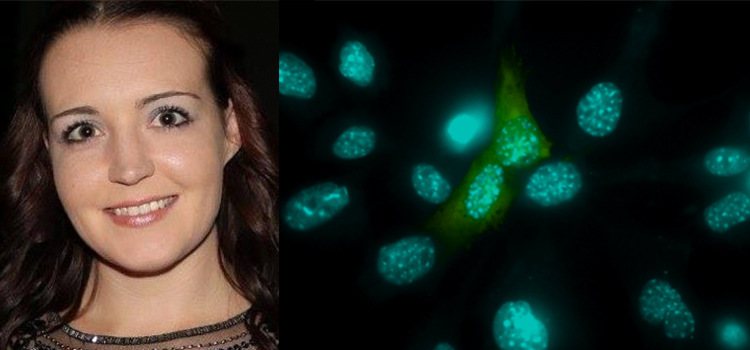
Image 1. Reilly (2017)
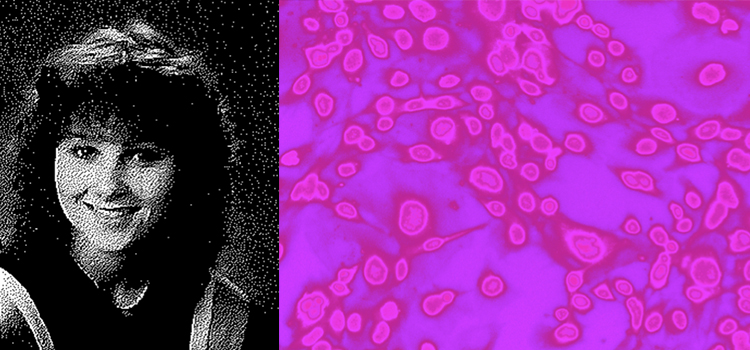
Image 2. Hatt (2017)
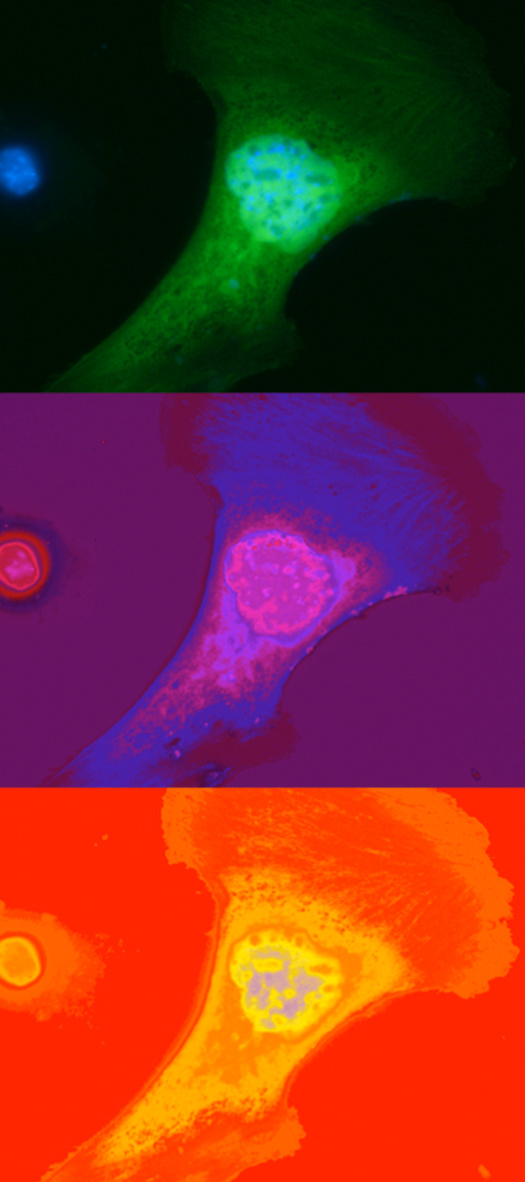
Image 3. Hypatia (2017)
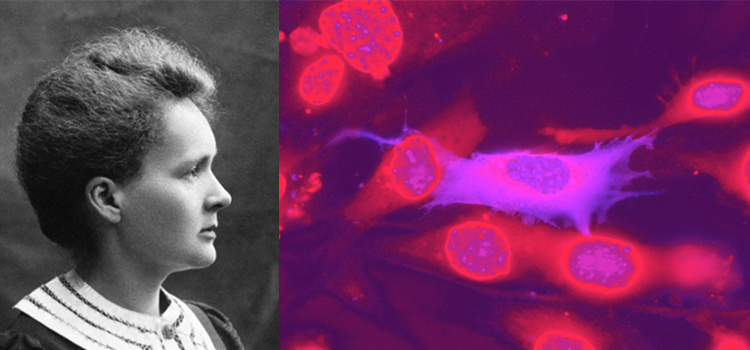
Image 4. Curie (2017)
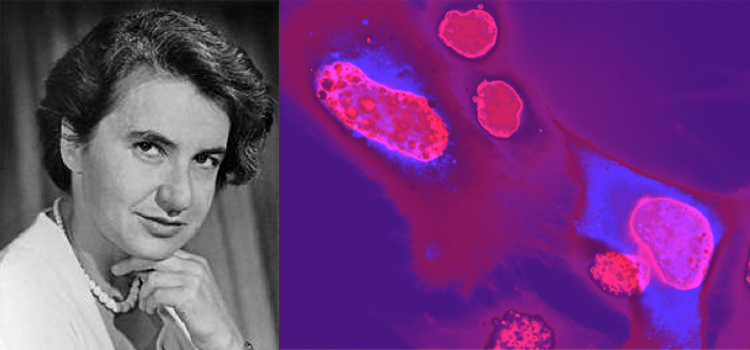
Image 5. Franklin (2017)

Image 6. McClintock (2017)
About the Author
 Claire Chabot
Claire Chabot
My name is Claire Chabot, and I am a Canadian-American citizen from Wolfville, Nova Scotia. I will be graduating from the USC Honors College in Spring 2019 with a major in Biochemistry and Molecular Biology as well as a minor in French. Throughout my time at USC I have been awarded the Magellan Scholar, the SURF Grant, and funding from the USC Artist in Residence program (AIR). My research has also won awards at Discover USC where I placed first in the Arts and Humanities and second in the Biological Sciences. Following graduation, I plan to attend medical school. Currently, I am interested in surgical subspecialties as I am drawn to the creative and visual aspects of this field as well as the immediate impact on patients. My long-term goals are to one-day work at an organization such as Doctors Without Borders.
As for the reasoning behind this art project, I wanted to find a way to express myself artistically as my major does not often allow for such opportunities, and this project gave me an outlet for such passions. My ultimate goal is to engage people in scientific research that may not be otherwise interested in it; to show others that there can be beauty in lab work and that it is not just statistics and pipetting. After having two cancer survivors approach my art exhibits I feel even more passionate about this message.
This project was possible with under the tutelage of Dr. Douglas Pittman and Dr. Nicole Reilly. Special thanks to Dr. Ed Munn Sanchez and Olaf Toffleson in the AIR program as well as Dr. Jason Stewart for lending me his EVOS microscope. My research has previously been presented at the Artist in Residence Gallery, the National Conference for Undergraduate Research, and Discover USC.
References
- http://www.pewresearch.org/fact-tank/2017/02/15/u-s-students-internationally-math-science/
- Havi Carel: “Illness: A Cry of the Flesh”
- Introducing Science Through Images: Cases of Visual Popularization
https://books.google.com/booksid=8itbDwAAQBAJ&pg=PT158&lpg=PT158&dq=aestheticizing+science&source=bl&ots=PyQIeFy40T&sig=_6o17tI0BkRwk-hMy8rcAdhrS0M&hl=en&sa=X&ved=2ahUKEwjEp7nep8_eAhWR2VMKHYCcB8UQ6AEwCHoECAIQAQ#v=onepage&q&f=false
- https://www.researchgate.net/profile/Steven_Miller10/publication/235695607_Public_Understanding_of_Science_at_the_Crossroads/links/53f1f1340cf2bc0c40e6f017.pdf
- Tarsounas, Madalena, et al. “Telomere Maintenance Requires the RAD51D Recombination/Repair Protein.” Cell, vol. 117, no. 3, 2004, pp. 337–347., doi:10.1016/s0092-8674(04)00337-x.
- https://www.nobelprize.org/prizes/physics/1903/marie-curie/biographical/
- https://www.britannica.com/biography/Rosalind-Franklin
- https://www.britannica.com/biography/Barbara-McClintock
- https://www.britannica.com/biography/Hypatia
- https://news.nationalgeographic.com/news/2013/13/130519-women-scientists-overlooked-dna-history-science/
